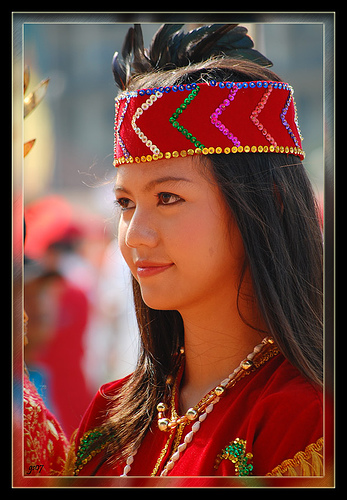 |
| rachmanjide.com |
Dayak identity was not referring to one community only. Even agreement on the use of the term itself actually Dayak unfinished. See for example the book by Mikhail Coomans (1987) or Herman Joseph van Hulten (1992) or even that the author is of the Dayaks themselves, Thambun Anyang (1998) who all use the term 'Power'
 |
| maulanusantara.wordpress.com |
Therefore, if we mean by Dayak is a native of Borneo, then surely we are talking about hundreds of identity (sub) ethnic groups - in addition is a native of Borneo - has some general similarities for example in terms of origin, worldviews or physical form. Language Dayaks were hundreds, different customary rituals, traditions also vary. Tradition mengayau example. One great if say that all of the Dayaks in ancient times was the head-hunters. This assumption is tantamount to saying that all of the Dayaks are Christian or all at war with the Dayak people of Madura. In short, the Dayaks were multiethnic, of course if we narrow the definition of ethnicity.
Because Dayak 'multiethnic', it is not too difficult to find multiculturalism in culture, because reality itself is multicultural Dayak. The language is different, so too has the tradition that each sub-ethnic. That is why the existential reality of these communities, at some time in the history of the past, Dayak communities were other people to each other. 'Other people' not only means not incorporated in a collective identity, or a kind of 'pan-dayakisme'-as it is known now, but some of the community also attack each other and kill each other physically. So the Dutch colonial government needs to take the initiative to gather the representatives of those communities in the Fall Anoi (Central Kalimantan now) in 1894 in order to resolve the dispute, quarrel due to various cases of murder, detention, and robbery. Please note that by SW Tromp, Afdeling West Kalimantan resident who reported from the meeting, participants not only the representative and head but also the Head of Adat Dayak Adat Melayu.
Fall Meeting Anoi not only prove that the Dayak people in the past engaged in hostilities with one another and with other ethnic groups, but also (and this is important) that culturally they have the potential to resolve all hostility and animosity that exists. In other words, they have a spirit of reconciliation which concretely proven-one of them-through meeting in the Fall Anoi it. Really Dayaks can make peace and forgive? Dayak cultural elements Which allows for it?
Source : http://maulanusantara.wordpress.com
0 komentar: on "The Dayak"
Posting Komentar